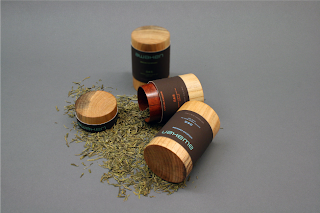The proliferation of green tea in Japan happened during the Kamakura period (1185-1333). Eisai, a founder of a Japanese Zen Buddhism sect, was instrumental in its reintroduction. In 1191, he brought green tea seeds from China to Japan and started cultivation of tea leaves in places like Kyusyu. He also gave the green tea seeds to Myoue, a priest in Kyoto, who spread the cultivation to other regions too. In 1211, Eisai wrote the first book about the health benefits of green tea, ‘Kissa Yohjoh Ki’. Eisai explains in his book that green tea can be “an ultimate mental and medical remedy” by describing its positive effects on the five vital organs: tea can act as a stimulant, ease the effects of alcohol, and help digestion. Eisai dedicated the book with green tea as a medicine for hang-overs to Sanetomo Minamoto, a Shogun (general) at that time. The Shogun was so impressed by the medical effectiveness of tea and encouraged cultivation of tea, which helped it to be spread among Samurai (warriors) and priest classes. Those days, green tea was made from new shoots grown under shade and processed through steaming, drying, and grinding in a stone mill into a powder, what we now call ‘Matcha.’ It was used mainly as a medicine or stimulus for training in Zen Buddhism or staying alert in battle.
During the 15th century, Matcha also became popular among ordinary people and tea-stands were situated in front of temples. Luxurious tea parties with expensive Chinese pottery and ‘To-cha,’ a kind of guessing game over tea production areas, became popular among feudal lords and upper classes. At the same time, opposed to the extravagant fashion, Shuko Murata, a Zen priest, insisted that green tea should be best enjoyed in spiritual communication between the host and the guests in a simple setting, based on the Zen philosophy, which was the beginning of “Sado/Chado,” or the Japanese Tea Ceremony. Matcha, as an art of hospitality, was enjoyed mainly by upper classes or businessmen/merchants in the beginning, but spread among common people as fashionable during the Edo period (1603-1868). The modern Sado has established its position as a traditional and spiritual art and a source for education now and its popularity has spread abroad as well. (Find out more on Tea Ceremony section)
The origin of the most popular type of tea, Sencha, can be traced back to the Edo period. The roasting and sun-drying method, a way of processing tea leaves as opposed to the steaming method, was again brought from China, but in 1738, Sohen Nagatani, a tea farmer in Uji/Kyoto, invented a new way of processing tea; steaming, hand-rubbing and drying. This new process of drying the leaves by hand-rubbing added a refreshing taste and fragrance to tea more than ever and allowed Sencha to be popularized throughout Japan to this day.


